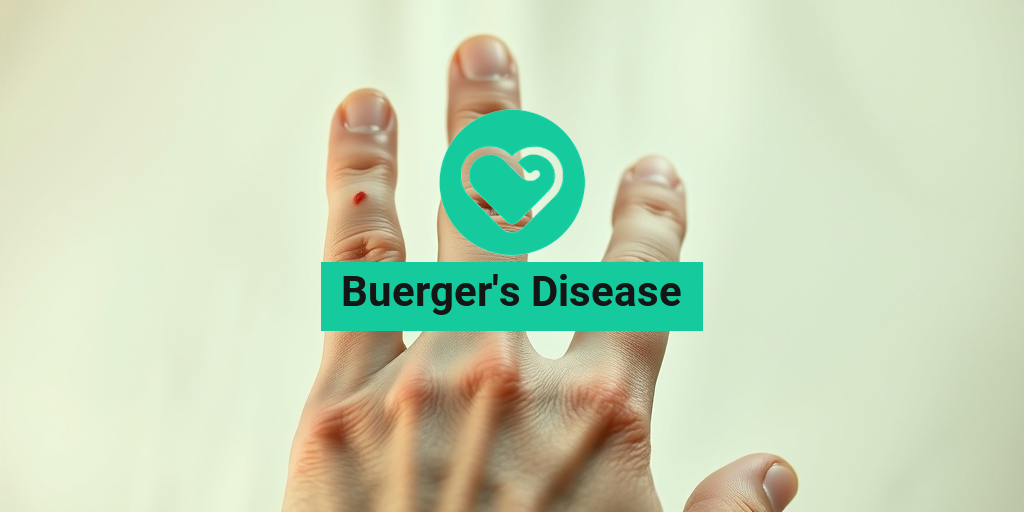“`html
What Is Safe Sex?
Safe sex refers to practices that reduce the risk of sexually transmitted infections (STIs) and unintended pregnancies. It encompasses a variety of methods and behaviors aimed at protecting both partners during sexual activity. The concept of safe sex is not just about using condoms; it also involves open communication, understanding your partner’s sexual health, and making informed choices.
Understanding Safe Sex Practices
At its core, safe sex is about being proactive in your sexual health. Here are some key components:
- Condom Use: Condoms are one of the most effective barriers against STIs and pregnancy. They should be used consistently and correctly for maximum protection.
- Regular Testing: Getting tested for STIs regularly is crucial, especially if you have multiple partners. Knowing your status helps you make informed decisions.
- Communication: Discussing sexual history and health with your partner can foster trust and ensure both parties are on the same page regarding safe practices.
- Limiting Partners: Reducing the number of sexual partners can lower the risk of exposure to STIs.
- Vaccinations: Vaccines are available for certain STIs, such as HPV and hepatitis B. Staying up to date with vaccinations can provide additional protection.
Safe Sex During Pregnancy
For those who are pregnant, practicing safe sex is essential to protect both the mother and the unborn child. Engaging in safe sex during pregnancy can help prevent infections that could harm the baby. Always consult with a healthcare provider for personalized advice.
Benefits of Safe Sex
Engaging in safe sex has numerous benefits that extend beyond just physical health. Here are some of the key advantages:
1. Reduces the Risk of STIs
One of the most significant benefits of safe sex is the reduced risk of contracting STIs. By using protection and getting tested regularly, individuals can significantly lower their chances of infection. This is particularly important for those who may have multiple partners or are unsure of their partner’s sexual health history.
2. Prevents Unintended Pregnancies
Safe sex practices, such as using condoms or other forms of birth control, help prevent unintended pregnancies. This allows individuals and couples to plan their families according to their circumstances and desires.
3. Promotes Healthy Relationships
Open discussions about safe sex can strengthen relationships. When partners communicate about their sexual health and boundaries, it fosters trust and intimacy. This transparency can lead to a more fulfilling sexual experience for both parties.
4. Enhances Sexual Enjoyment
Many people find that practicing safe sex can enhance their sexual experiences. Knowing that you are protected from STIs and unintended pregnancies can lead to greater relaxation and enjoyment during intimacy. This peace of mind allows partners to focus on each other rather than worrying about potential risks.
5. Empowers Individuals
Understanding and practicing safe sex empowers individuals to take control of their sexual health. It encourages informed decision-making and promotes a proactive approach to health and wellness. Resources like Yesil Health AI can provide valuable information and support for those seeking to learn more about safe sex practices.
6. Supports Public Health
By practicing safe sex, individuals contribute to the overall health of their communities. Lower rates of STIs and unintended pregnancies can lead to reduced healthcare costs and a healthier population. This collective responsibility is vital for public health.
In conclusion, safe sex is an essential aspect of sexual health that benefits individuals and society as a whole. By understanding what safe sex entails and actively engaging in safe practices, you can protect yourself and your partners while enjoying a fulfilling sexual life. Remember, knowledge is power, and taking charge of your sexual health is one of the best decisions you can make! 🌟
“`

“`html
Safe Sex Methods
Engaging in safe sex is crucial for protecting yourself and your partner from sexually transmitted infections (STIs) and unintended pregnancies. Understanding the various methods available can empower you to make informed choices. Here are some effective safe sex methods to consider:
1. Use Condoms
Condoms are one of the most popular and effective methods for practicing safe sex. They act as a barrier to prevent the exchange of bodily fluids, significantly reducing the risk of STIs and pregnancy. Here are some key points about condom use:
- Types: There are male and female condoms available, both of which are effective when used correctly.
- Material: Latex condoms are the most common, but there are also options made from polyurethane and polyisoprene for those with latex allergies.
- Proper Use: Always check the expiration date, use a new condom for each sexual encounter, and follow the instructions for proper application.
2. Dental Dams
For oral sex, dental dams can provide a protective barrier. These thin sheets of latex or polyurethane can help prevent the transmission of STIs during oral activities. Here’s how to use them:
- Placement: Place the dental dam over the vulva or anus before engaging in oral sex.
- Lubrication: Use water-based or silicone-based lubricants to enhance comfort and reduce the risk of tearing.
3. Regular STI Testing
Regular testing for STIs is an essential part of safe sex practices. Knowing your status and that of your partner can help you make informed decisions. Here’s what you need to know:
- Frequency: It’s recommended to get tested at least once a year, or more frequently if you have multiple partners.
- Communication: Discuss testing with your partner before engaging in sexual activities.
4. Limit Number of Sexual Partners
Reducing the number of sexual partners can lower your risk of exposure to STIs. While this may not be feasible for everyone, it’s a consideration worth discussing with your partner. Here are some tips:
- Mutual Monogamy: Consider being in a mutually monogamous relationship where both partners are tested and committed to each other.
- Open Communication: Talk openly with your partners about sexual history and health status.
Contraceptive Options
When it comes to preventing unintended pregnancies, there are several contraceptive options available. Each method has its own benefits and considerations, so it’s important to choose one that fits your lifestyle and needs. Here’s a breakdown of popular contraceptive methods:
1. Birth Control Pills
Birth control pills are a hormonal method that can effectively prevent pregnancy when taken as directed. Here are some important points:
- Types: There are combination pills (containing estrogen and progestin) and progestin-only pills.
- Effectiveness: When taken correctly, they are over 99% effective in preventing pregnancy.
- Consultation: Speak with a healthcare provider to find the right pill for you.
2. Intrauterine Devices (IUDs)
IUDs are small devices inserted into the uterus by a healthcare professional. They can be hormonal or copper-based and provide long-term contraception. Here’s what to know:
- Duration: IUDs can last anywhere from 3 to 10 years, depending on the type.
- Effectiveness: They are more than 99% effective in preventing pregnancy.
3. Implants
Contraceptive implants are small rods placed under the skin of the upper arm. They release hormones to prevent ovulation. Key points include:
- Duration: Implants can last up to 3 years.
- Effectiveness: They are also over 99% effective.
4. Emergency Contraception
Emergency contraception (EC) can be used after unprotected sex to prevent pregnancy. Here’s what you should know:
- Types: There are pills (like Plan B) and the copper IUD as options for emergency contraception.
- Timing: EC is most effective when taken as soon as possible after unprotected intercourse.
Practicing safe sex and understanding contraceptive options are vital for maintaining sexual health. By being informed and proactive, you can enjoy a fulfilling and responsible sexual life. 🌟
“`

“`html
STI Prevention
When it comes to safe sex, one of the most critical aspects is preventing sexually transmitted infections (STIs). Understanding how to protect yourself and your partner is essential for maintaining sexual health. Here are some effective strategies for STI prevention:
1. Use Protection
The most effective way to reduce the risk of STIs is by using protection during sexual activity. Condoms are a reliable barrier method that can significantly lower the chances of transmitting infections. Whether you opt for male or female condoms, ensure they are used correctly:
- Check the expiration date before use.
- Store condoms in a cool, dry place to prevent damage.
- Use a new condom for each sexual encounter.
2. Get Tested Regularly
Regular STI testing is crucial, especially if you have multiple partners or engage in unprotected sex. Many STIs can be asymptomatic, meaning you might not know you have one. Getting tested helps you:
- Know your status and that of your partner.
- Receive timely treatment if necessary.
- Prevent the spread of infections to others.
3. Limit Number of Sexual Partners
Reducing the number of sexual partners can lower your risk of STIs. While it’s natural to explore relationships, being selective about partners can help you maintain better control over your sexual health. Consider discussing sexual history with potential partners to ensure mutual understanding and safety.
4. Vaccination
Vaccines are available for certain STIs, such as hepatitis B and human papillomavirus (HPV). Getting vaccinated can provide an additional layer of protection. Consult with your healthcare provider about which vaccines are appropriate for you.
5. Practice Mutual Monogamy
Engaging in a mutually monogamous relationship, where both partners agree to be sexually exclusive, can significantly reduce the risk of STIs. Open communication about sexual health and history is vital in establishing trust and safety in such relationships.
Communication with Partners
Effective communication is a cornerstone of safe sex. Discussing sexual health openly with your partner can enhance intimacy and ensure both parties feel comfortable and informed. Here are some tips for fostering healthy conversations about sex:
1. Be Honest About Your Sexual History
Before engaging in sexual activity, it’s important to share your sexual history with your partner. This includes discussing any past STIs, testing history, and current sexual health status. Honesty builds trust and allows both partners to make informed decisions.
2. Discuss Protection Options
Talk about the types of protection you both prefer and are comfortable using. Discussing options like condoms, dental dams, or other barrier methods can help ensure that both partners are on the same page regarding safe sex practices. Remember, it’s essential to respect each other’s preferences and boundaries.
3. Set Boundaries
Establishing clear boundaries regarding sexual activity is crucial. Discuss what you are comfortable with and what your limits are. This conversation can help prevent misunderstandings and ensure that both partners feel safe and respected.
4. Encourage Regular Testing
Make it a habit to encourage each other to get tested regularly. This not only promotes individual health but also strengthens the relationship by showing that you care about each other’s well-being. You can even plan to get tested together, making it a supportive experience.
5. Create a Safe Space for Ongoing Conversations
Sexual health discussions shouldn’t be a one-time event. Create an environment where both partners feel comfortable bringing up concerns or questions about sexual health. Regular check-ins can help maintain open lines of communication and reinforce the importance of safe sex.
By prioritizing STI prevention and fostering open communication with partners, you can create a healthier and more fulfilling sexual experience. Remember, safe sex is not just about protection; it’s about mutual respect, understanding, and care for one another’s health. 🌟
“`

“`html
Safe Sex Myths
When it comes to safe sex, misinformation can lead to risky behaviors and health issues. Understanding the myths surrounding safe sex is crucial for making informed decisions. Let’s debunk some of the most common misconceptions.
Myth 1: You Don’t Need Protection if You’re in a Monogamous Relationship
Many people believe that being in a committed relationship means they can skip protection. However, this is a dangerous assumption. Even in monogamous relationships, partners can carry sexually transmitted infections (STIs) without showing symptoms. Regular testing and open communication about sexual health are essential, regardless of relationship status.
Myth 2: Birth Control Pills Provide Complete Protection Against STIs
While birth control pills are effective in preventing pregnancy, they do not protect against STIs. Using condoms in conjunction with other forms of birth control is the best way to ensure both pregnancy prevention and STI protection. Remember, condoms are the only method that protects against STIs while also preventing pregnancy.
Myth 3: You Can’t Get STIs from Oral Sex
This myth is particularly dangerous. Oral sex can transmit STIs such as herpes, gonorrhea, and syphilis. Using barriers like flavored condoms or dental dams during oral sex can significantly reduce the risk of transmission. Always prioritize safety, even in less conventional sexual practices.
Myth 4: If You’re Healthy, You Don’t Need to Worry About STIs
Just because you feel healthy doesn’t mean you are free from STIs. Many infections can be asymptomatic, meaning you might not show any signs but can still transmit them to your partner. Regular testing is a key component of maintaining sexual health, regardless of how you feel.
Myth 5: Safe Sex is Only for Young People
Safe sex is important for everyone, regardless of age. Older adults are often overlooked in discussions about safe sex, but they can also be at risk for STIs. Education and awareness should be inclusive, addressing the needs of all age groups.
Resources for Safe Sex Education
Educating yourself about safe sex is vital for maintaining your sexual health and the health of your partners. Here are some valuable resources to help you learn more:
1. Planned Parenthood
Planned Parenthood offers a wealth of information on sexual health, including safe sex practices, STI prevention, and contraception options. Their website features articles, videos, and even quizzes to test your knowledge. Visit their site at Planned Parenthood for more information.
2. Centers for Disease Control and Prevention (CDC)
The CDC provides comprehensive guidelines on sexual health, including statistics on STIs and recommendations for safe sex practices. Their resources are evidence-based and regularly updated. Check out their website at CDC Sexual Health.
3. Local Health Departments
Your local health department can be a great resource for safe sex education. They often provide free or low-cost STI testing, educational materials, and workshops. Don’t hesitate to reach out to them for information tailored to your community.
4. Online Courses and Webinars
Many organizations offer online courses and webinars focused on sexual health education. Websites like Coursera and Udemy feature courses on topics ranging from safe sex practices to understanding STIs. These platforms can provide you with in-depth knowledge at your own pace.
5. Books and Literature
There are numerous books available that cover safe sex and sexual health comprehensively. Titles like “The Guide to Getting It On” by Paul Joannides and “Come As You Are” by Emily Nagoski offer valuable insights into sexual health and relationships. Check your local library or bookstore for these resources.
Remember, knowledge is power! The more you educate yourself about safe sex, the better equipped you will be to make informed decisions that protect your health and the health of your partners. 🛡️
“`

“`html
Frequently Asked Questions about Safe Sex
What is Safe Sex?
Safe sex refers to practices that reduce the risk of sexually transmitted infections (STIs) and unintended pregnancies. This includes using protection such as condoms and dental dams during sexual activities.
Why is Safe Sex Important?
Engaging in safe sex is crucial for maintaining sexual health. It helps prevent the spread of STIs and protects against unintended pregnancies, allowing individuals to enjoy their sexual experiences with peace of mind.
What are some Safe Sex Practices?
- Always use condoms or dental dams during intercourse.
- Get regularly tested for STIs, especially if you have multiple partners.
- Communicate openly with your partner about sexual health and history.
- Limit the number of sexual partners to reduce risk.
- Consider vaccination for preventable STIs, such as HPV and Hepatitis B.
Can I Practice Safe Sex During Pregnancy?
Yes, practicing safe sex during pregnancy is important. It is advisable to consult with a healthcare provider to understand which sexual activities are safe and to discuss any concerns regarding STIs.
How to Have Safe Sex with Herpes?
If you or your partner has herpes, it’s essential to communicate openly. Use condoms to reduce the risk of transmission, and consider antiviral medications to lower the chances of outbreaks and spreading the virus.
What are Some Safe Sex Education Resources?
Many organizations provide valuable information on safe sex practices. Look for resources from health departments, sexual health clinics, and educational websites that focus on sexual health and safety.
What are Some Catchy Safe Sex Slogans?
- “Wrap it before you tap it!”
- “No glove, no love!”
- “Stay smart, use a condom!”
Can I Have Safe Sex Without Protection?
While some methods, such as withdrawal or fertility awareness, can reduce the risk of pregnancy, they do not protect against STIs. It is always recommended to use protection for safe sex.
How Can I Talk to My Partner About Safe Sex?
Start the conversation in a comfortable setting. Be honest about your feelings and concerns regarding sexual health. Discuss the importance of safe sex and agree on practices that work for both of you.
Where Can I Get Tested for STIs?
You can get tested for STIs at various locations, including:
- Your primary care physician’s office
- Local health departments
- Planned Parenthood clinics
- Community health centers
What Should I Do If I Think I Have an STI?
If you suspect you have an STI, it’s important to seek medical advice promptly. Get tested and follow your healthcare provider’s recommendations for treatment and informing partners.
“`




